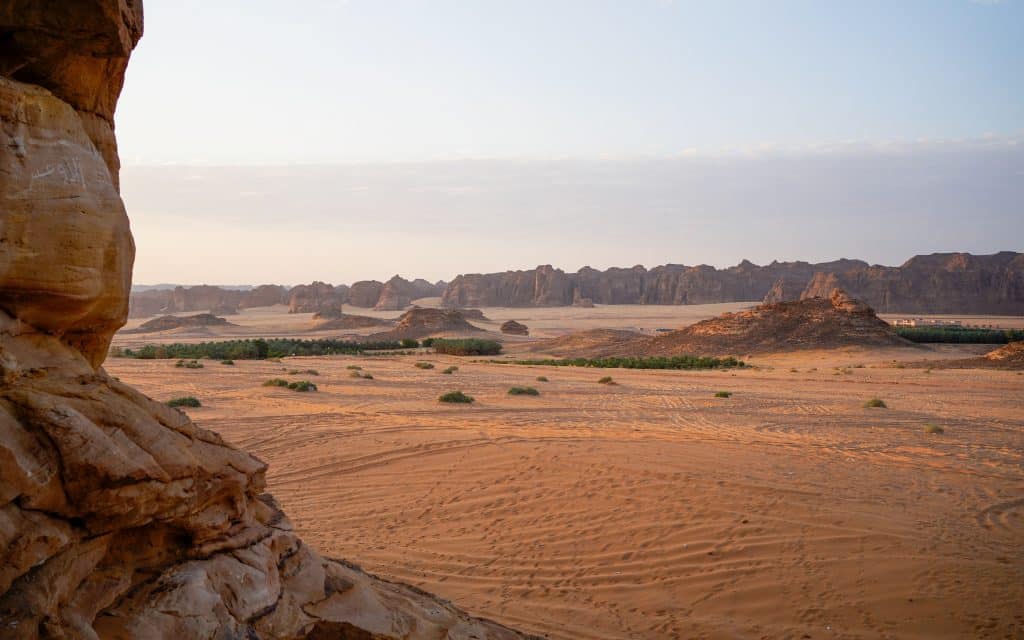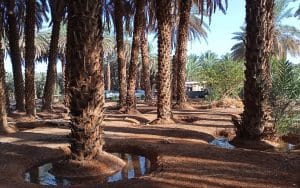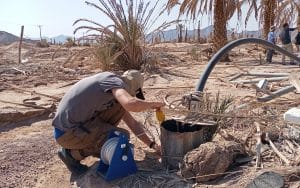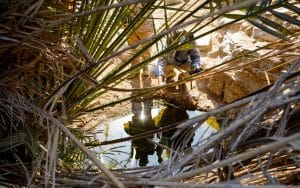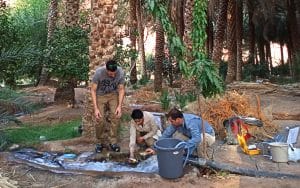The WAO Project
The WAO project aims to improve the understanding of the hydrological functioning of the Saq aquifer in the Al Ula region (Saudi Arabia) in order to move towards a sustainable management of this essential resource for the socio-economic and agricultural development of this oasis.
The WAO project is part of the OASIS programme funded by AFALULA (French Agency for the Development of Al-Ula) through its cooperation with Saudi Arabia and the Royal Commission for Al-Ula (RCU). This research and development programme aims to study the Al-Ula oasis, which is home to the archaeological site of Madâin Sâlih, better known by its ancient name of Hegra, a major site of the Nabataean civilisation located in the north-west of Saudi Arabia, and the first Saudi site to be inscribed on the UNESCO World Heritage List.
This multidisciplinary programme brings together archaeologists, geo-archaeologists, palaeoclimatologists, soil scientists, botanists, agronomists, ethnobotanists and ethnologists, and aims to improve our understanding of the Al-Ula oasis ecosystem and to provide a knowledge base for building a sustainable development, economic and tourism model that respects this exceptional environment.
The 4-year project led by CEREGE focuses on the study of the current and past functioning of the aquifer system that supplies the Al-Ula oasis ecosystem. On the one hand, the aim is to evaluate the current resource and the impact of withdrawals on it, and on the other hand, to reconstruct the functioning of this hydrosystem in the climatic and environmental context of the last millennia in order to specify the conditions that allowed the human occupation of this arid zone and the development of protohistoric societies
To this end, the project proposes to :
. characterise the aquifer system by combining hydrogeological (piezometric monitoring, setting up a sensor network, modelling, etc.), geophysical (satellite gravity data, etc.) and hydrogeochemical (sampling, groundwater monitoring, elemental and isotopic analyses) approaches
. to study different types of sedimentary archives in order to reconstruct climatic and environmental variability in the region.
The central questions that the WAO project aims to answer are
- How much water is currently withdrawn from the aquifer in the Al Ula region to support the oasis economy?
- What is the sustainability of the aquifer resource that can be mobilised on a local and regional scale?
- Is there current active recharge of the aquifer?
- What is the average groundwater quality in the Al Ula region?
- Is there a risk of contamination and salinisation in connection with the overexploitation of water resources?
- Where does the water come from and how old is it?
- What were the past environmental and climatic conditions that allowed human settlement in the Al Ula region?
The WAO Project
CEREGE lead :
Pierre Deschamps
Water resources in the Al Ula Oasis in the past, present, and future: hydrology, geochemistry and paleoclimatology.
